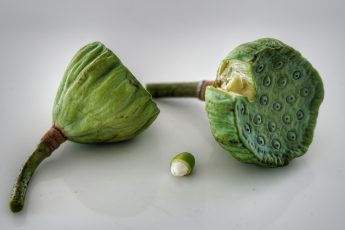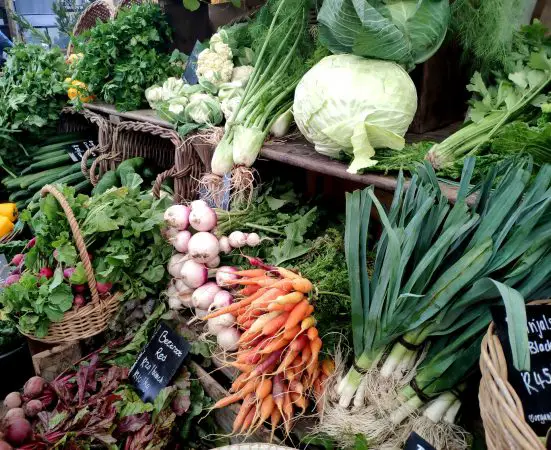If you are looking to enjoy a meal out at an Indian cuisine restaurant, or you want to try some Indian recipes at home, you are in for a treat. How can you go wrong with the delicious and fresh nan, along with butter chicken and samosas? How about the vegetables? You cannot go wrong with any of those.
There are plenty of Indian vegetables that are not only delicious but contain so many essential nutrients and minerals that are excellent for your health. When you are looking into making Indian dishes, you will want to follow recipes that feature many delicious vegetables from India.
So, what are some of the typical Indian vegetables? Let’s go over some of those names right now.
Indian Vegetable Names
Check out our blog to find out more about vegetables and fruits. HERE
Bitter Gourd Or Karela
When you think of bitter gourd, also known as karela, you probably think back to your childhood and can’t help but remember how much you could not stand that vegetable. However, as you mature, your tastes do as well, and you may now appreciate bitter gourd because of the health benefits.
This Indian vegetable is a superfood, and it not only helps to ward off ailments such as diabetes, but it is excellent for digestion. Bitter gourd also helps improve your immunity, and it is a low-calorie food, and 100 grams of bitter gourd is only 17 calories—a great vegetable to include in your diet if you are watching what you eat.
Ridge Gourd Or Turai
Another Indian vegetable known as turai is a green vegetable, ridge gourd. The vegetable is also a superfood, and that is because it not only cleanses your blood of toxins but it is also good for your liver. In Ayurvedic medicine, turai was a cure for jaundice.
Additionally, this superfood is also good for your digestion as it helps cure constipation. It also is good for your kidneys and spleen and also reduces blood glucose levels.
Therefore, if you happen to be diabetic or prediabetic, you will want to grab some ridge gourd from the supermarket so you can keep your sugar levels stable.
Fenugreek Or Methi
If you don’t know too much about the properties of fenugreek, you will learn about it now. Fenugreek or methi is an Indian vegetable that has plenty of excellent health properties.
Not only does this vegetable help to lower bad cholesterol, but it also helps to lower your blood triglyceride levels. The vegetable is also excellent for helping to stabilize blood pressure, and it is good for heart health.
If you have digestive issues, fenugreek is also very good because it calms stomach aches and helps relieve constipation. Fenugreek is also known to help remove toxins from your body quicker.
Snake Beans Or Chichinda
Snake beans are another Indian vegetable, and they are not beans in the literal sense, as they are also known as chichinda as they are very tall green strands. They have many benefits that include helping to reduce certain types of cancers and improving digestive health.
It also helps regulate blood pressure and is also good for weight loss. Snake beans are good for your vision as it has plenty of Vitamin A or beta carotene. Pregnant women should eat snake beans because it helps prevent congenital disabilities as it is rich in folate.
You can find some recipes that involve snake beans.
Pointed Gourd Or Parwal
The pointed gourd is an Indian vegetable also known as parwal or patola with a flavor similar to squash and cucumber, and you can compare the appearance to both of them. The pointed gourd is technically a fruit since it contains seeds inside.
However, it goes well with vegetables and meat. Indian chefs and cooks have mainly used pointed gourd for making gravy, but the flesh is also delicious to eat as a side dish as well.
The health benefits of the pointed gourd are that it helps detoxify the blood, improves your immune system. and is also very good for digestion. Additionally, because the pointed gourd has plenty of Vitamins A and C, it helps to improve complexion and can help reverse aging on the skin.
You will find that a pointed gourd can help keep blood glucose levels regular, and it helps with weight loss. Therefore, the pointed gourd is a superfood.
Indian Squash Or Tinda
Another Indian superfood is known as tinda or the Indian squash. Tinda is technically a fruit, and it has many similarities to zucchini. You can also eat the seeds and roast them. Indian and Pakistani gourmet dishes contain tinda.
There are many health benefits that tinda provides, such as helping to promote weight loss, as well as helps improve the digestive system. It is also good for your cardiovascular and respiratory systems; Tinda helps detoxify kidneys.
It is good for your eye health and good for your mental health as well.
Conclusion
Those are only a few Indian vegetables that might be somewhat more unfamiliar to you than some others. However, many vegetables that you eat often are also from India. For instance, artichokes are known as hathichak, beetroot is known as chukandar, jackfruit, natal plums, and celery is known as ajmoda.
The one thing that you see that all Indian vegetables have in common is that they are all superfoods. They contain properties that are pretty powerful in keeping you healthy. In Ayurvedic medicine, many of these Indian vegetables became treatments for various conditions.
Even though you need modern medicine treatments, these foods can help you stay healthy as well.
Let us know what you think in the comments below. Check out our website to have more insights into your gardens.



